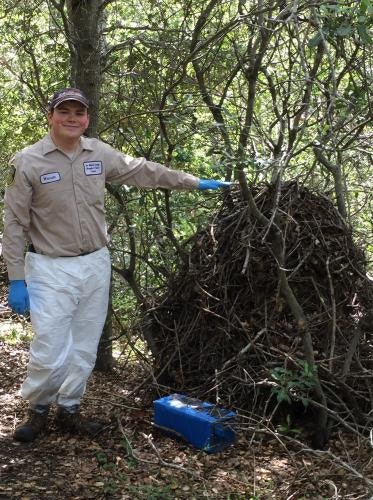Wood Rats

Dusky-footed wood rats (Neotoma fuscipes) are native to San Mateo County and frequently live in wooded areas near creeks and streams. They make large, elaborate nests, called woodrat houses, of twigs and leaves that can be over three feet high. These houses can be on the ground or in the trees and provide shelter for other species including native mice, lizards, and an incredible variety of insects.
Woodrats are similar in appearance to roof rats and Norway rats, but with a broad body, large ears and a furred tail (though not fluffy, like the tails of squirrels). Female woodrats are an average of 8 inches long with a 7 inch tail (nearly as long as their body). Males are larger at 9 inches long with an 8.5 inch tail on average.

Woodrats are called pack rats because they frequently collect and store non-food items that they find interesting, like Christmas ornaments, mousetraps, bullet casings, cat toys, and other shiny things. They are called trade rats because if they are already carrying something and see something they like better, they will drop the item they are carrying and “trade” it for the new item.
Woodrats may have two litters per year of 2-6 offspring. They typically live 2-3 years in the wild. Woodrats rarely infest human homes, but may enter buildings to look for food or building material, leave droppings on porches and decks, or steal small objects left outdoors.
In California, woodrats are a reservoir species for Lyme disease and anaplasmosis. However, they do not transmit the disease directly to humans - Lyme disease and anaplasmosis are transmitted by tick bites.
Page last reviewed: December 28, 2023
